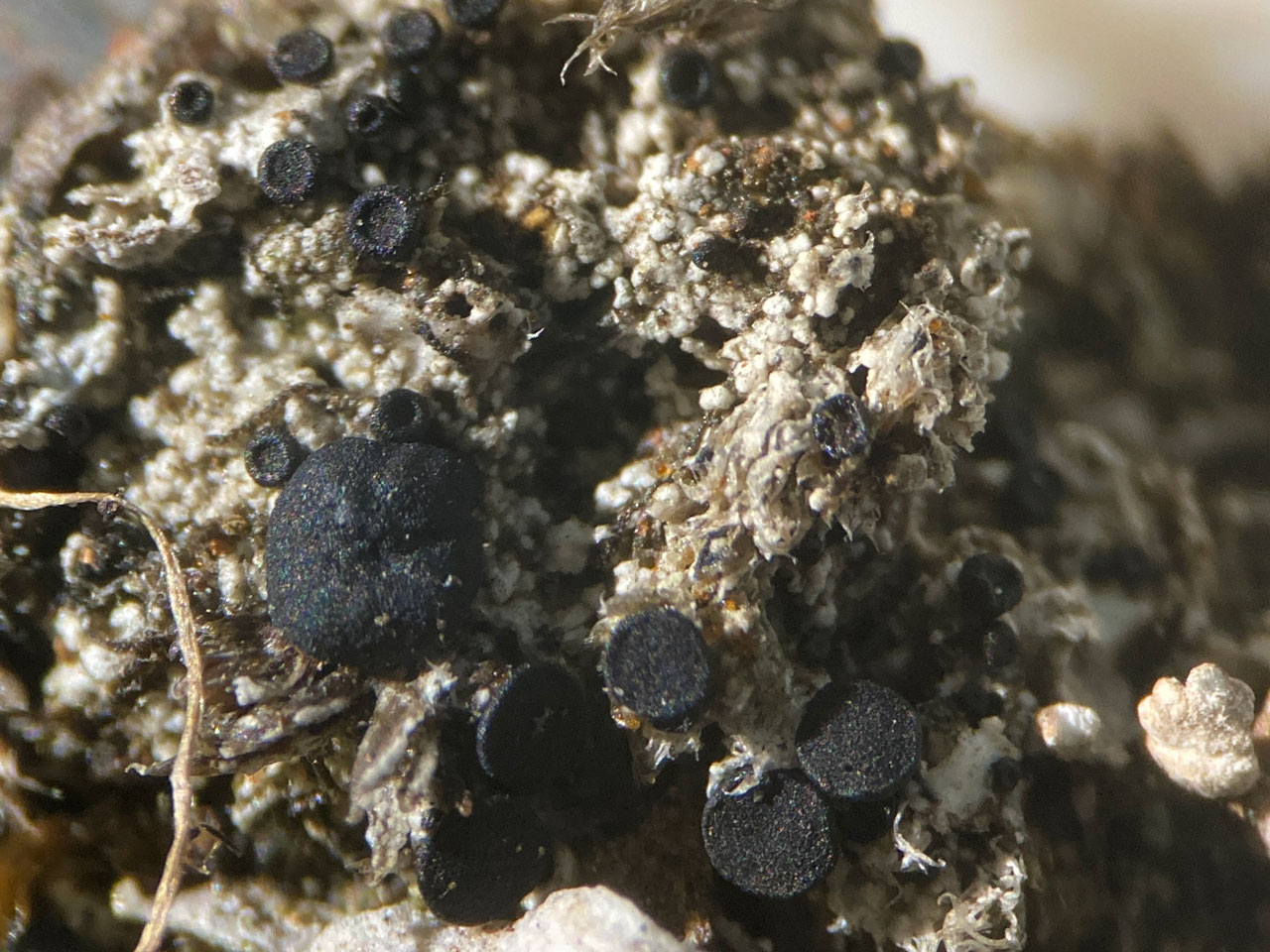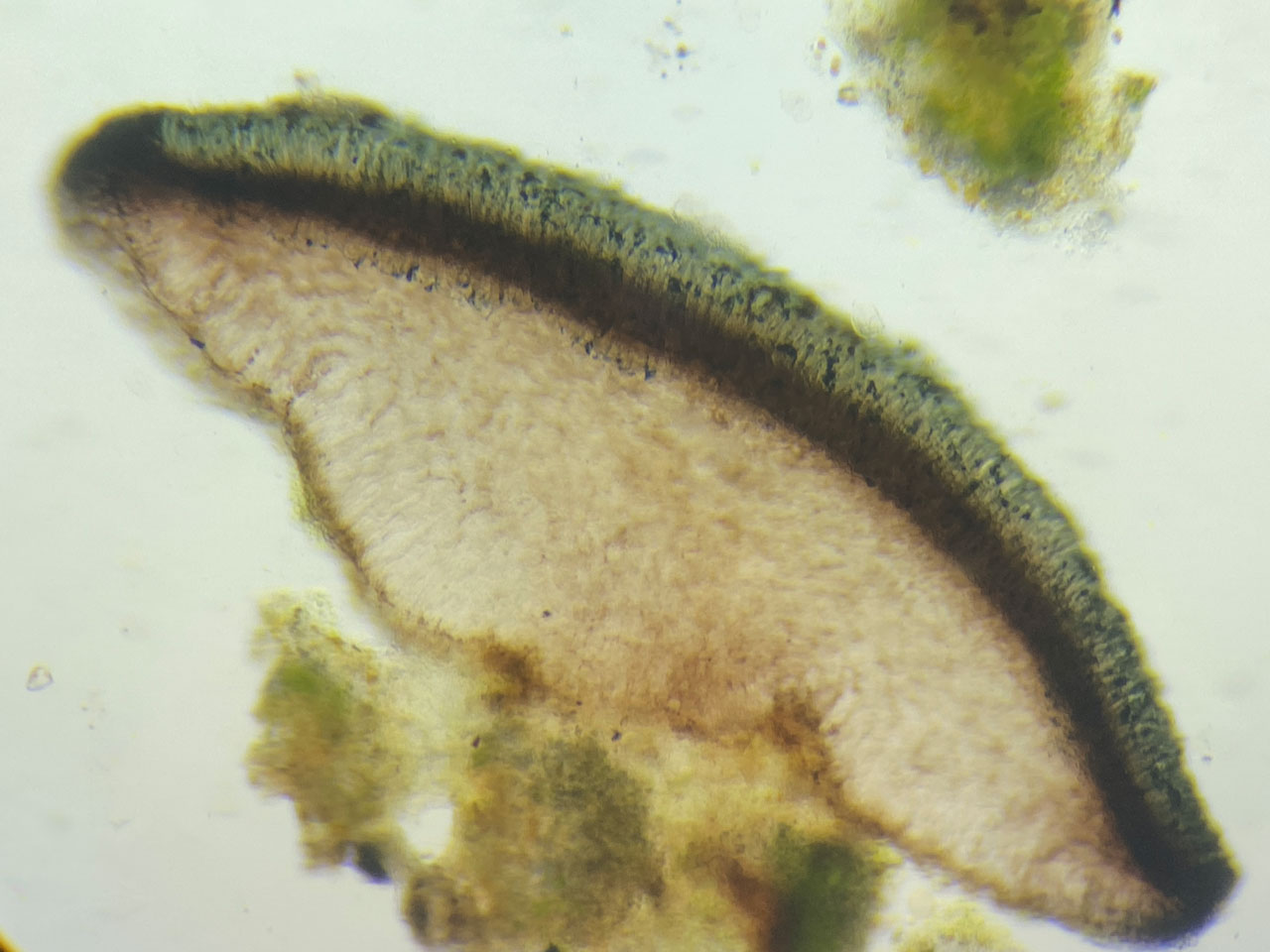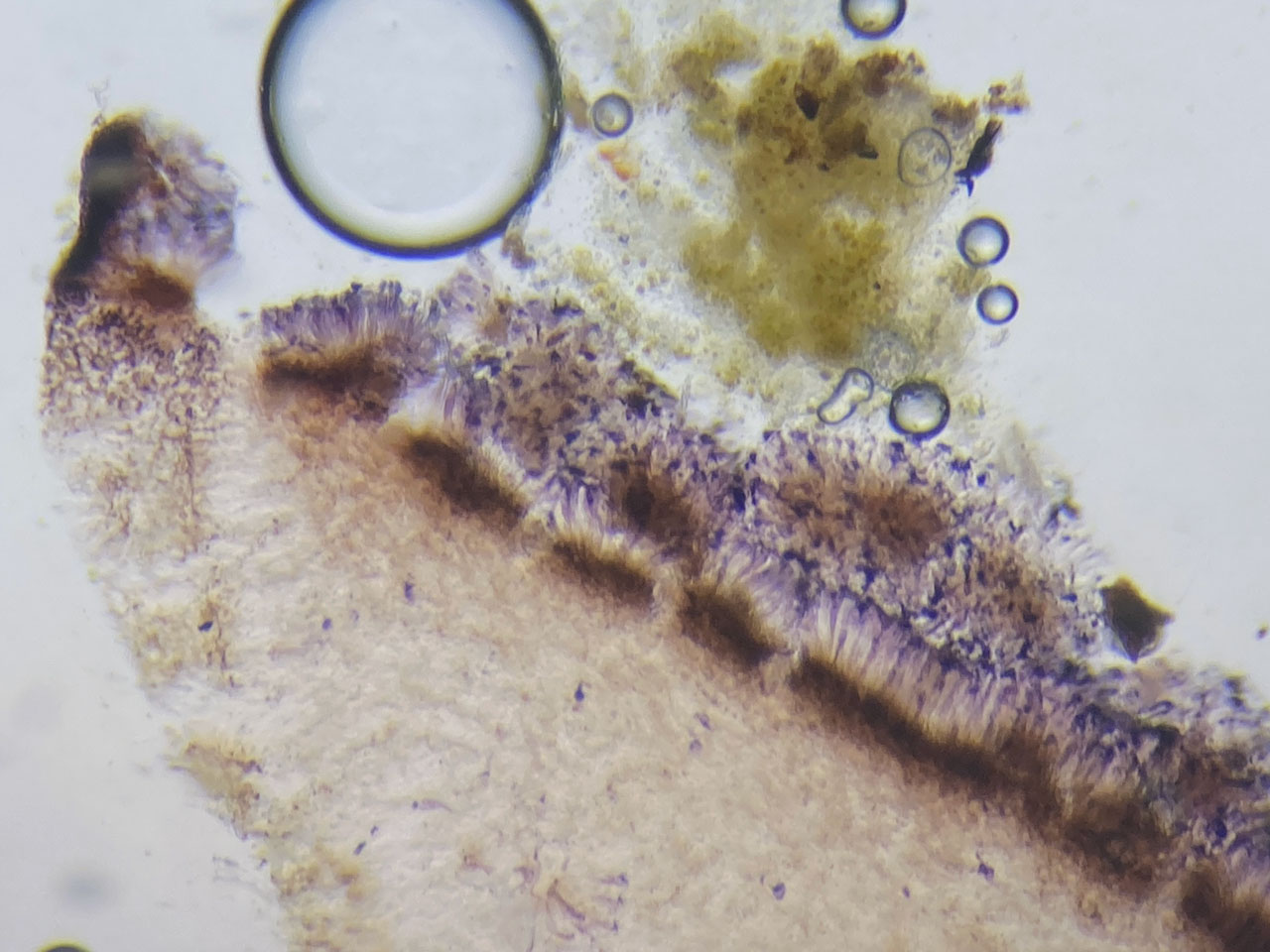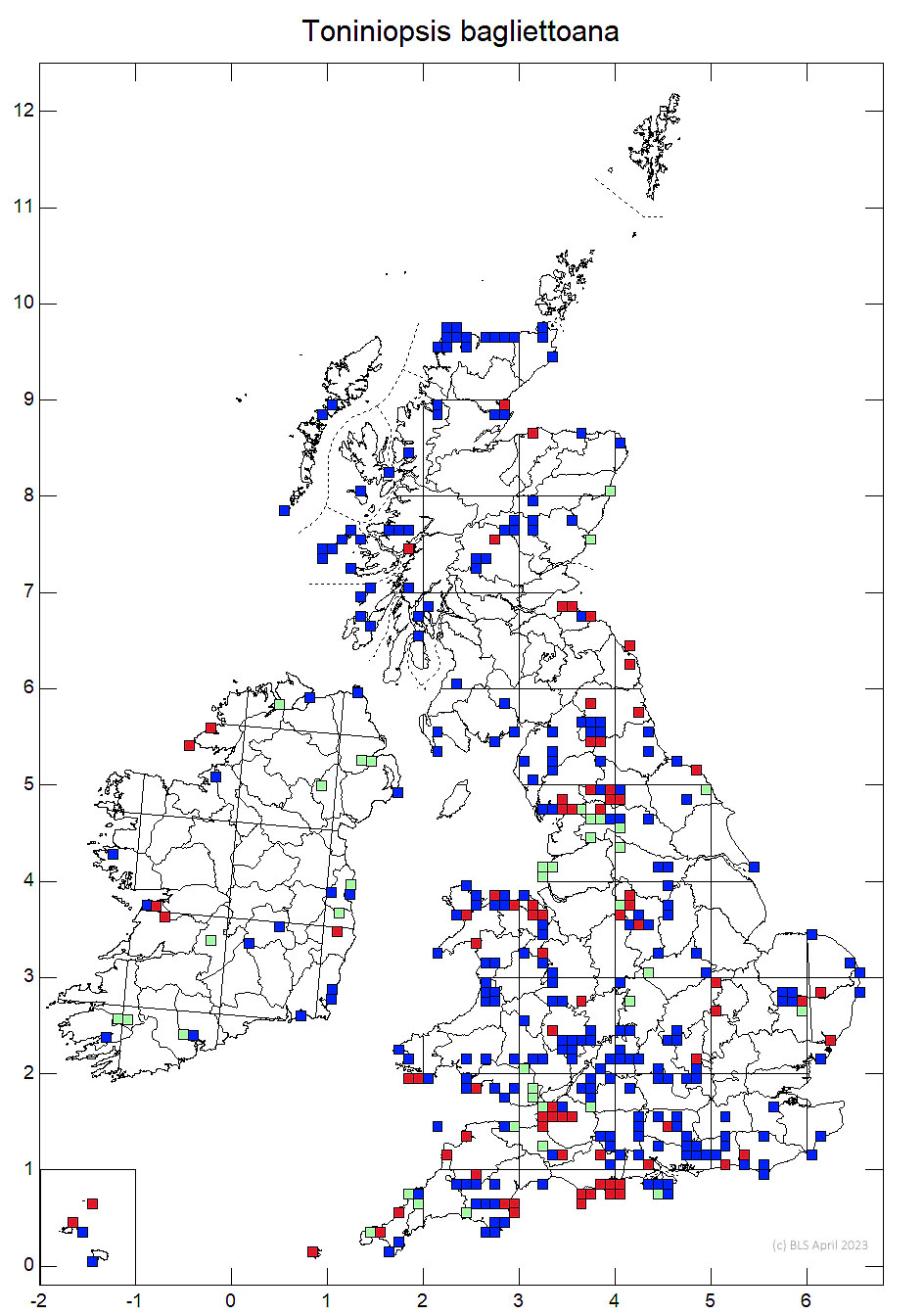A small inconspicuous pale crust with black disks found in very open habitat on base rich substrates, both on rocks and in short grasslands. Potentially confused in the field with Bilimbia sabuletorum, but this has piebald apothecia not black apothecia and can be easily separated by the ascospore shape and width.
Thallus white or green-white, ± granular or warted; photobiont cells 7–15 μm diam. Apothecia 0.3–1 (–1.2) mm diam., flat and marginate, eventually ± convex, usually distinctly constricted below, black; true exciple red-brown in upper and outer parts, pale red-brown within but becoming colourless below, hyphae radiating, 3–5 μm diam. (in K) with thick, gelatinized walls and lumina to less than 1.5 μm; epithecium olive- to blue-green, K–, N+ violet with blue granules; hymenium 40–55 μm high; hypothecium red-brown and K+ intensifying red in upper 25–35 μm, pale red to colourless below; paraphyses 1.5–2 μm diam., unbranched or a few forked above, the apices swollen to 4 (–5) μm. Ascospores 25–45 × 2–2.5 (–3) μm, 3- to 7-septate, acicular or ± bacilliform.
Sometimes confused in the field with Bilimbia sabuletorum, but easily separated by the ascospore shape and width, and black, not piebald apothecia. Bacidia herbarum grows in similar habitats, but has red-brown apothecia and Bacidina indigens has a colourless hypothecium.
Over mosses or plant debris on calcareous rocks (including old walls) or on the ground in chalk or limestone grassland or calcareous dunes.

Local, throughout Britain, a few scattered Irish records.
Cannon, P., Ekman, S., Kistenich, S., LaGreca, S., Printzen, C., Timdal, E., Aptroot, A., Coppins, B., Fletcher, A., Sanderson, N. & Simkin, J. (2021). Lecanorales: Ramalinaceae, including the genera Bacidia, Bacidina, Bellicidia, Biatora, Bibbya, Bilimbia, Cliostomum, Kiliasia, Lecania, Megalaria, Mycobilimbia, Phyllopsora, Ramalina, Scutula, Thalloidima, Toninia, Toniniopsis and Tylothallia. Revisions of British and Irish Lichens 11: 1-82.
Text by Neil A. Sanderson based on Cannon et al (2021)



